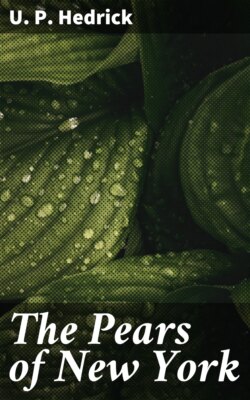Читать книгу The Pears of New York - U. P. Hedrick - Страница 8
На сайте Литреса книга снята с продажи.
THE PEAR IN ANCIENT ROME
ОглавлениеTable of Contents
Italy, by common consent, is the garden of the world, and it would be strange if the pear had not been taken to this favored land with the earliest tillers of orchards, or if attempts had not been made to domesticate the wild pears found in the northern mountains. And so we may assume, with no very definite proofs, that the pear was cultivated in ancient Rome some hundreds of years before the Christian era. In Cato, the first book written in Latin on agriculture, the pear is discussed, and six varieties are named and described. What had this illustrious Roman, known generally as a statesman and scholar, to do with pomology?
Marcus Portius Cato (B.C. 235–150), called the elder Cato, besides serving Rome in state and army, wrote a treatise on farming, fruit-growing, and gardening, which, first of its kind in Latin literature, may be read with greater profit than the works of most writers of our own day in agriculture. Cato was preeminently the first agricultural philosopher, and no one who has followed him has packed more shrewd agricultural philosophy in a book than he. But it is as a pomologist that Cato concerns us most at this time. Cato describes almost every method of propagating, grafting, caring for, and keeping fruits known to twentieth-century fruit-growers. He describes, also, many varieties of fruits, as well as of vegetables, grains, and breeds of farm animals. Among Cato’s fruits are six varieties of pears. What is of especial interest in this history is that Cato writes as if the practices of agriculture and the plants and animals he described were not only established but ancient in his time.
Varro, whose standing as a Roman writer on agriculture is noted above, says nothing of varieties of pears, but gives directions for grafting pear-trees, among other methods that of inarching of which he seems the first ancient writer to take note, thereby justifying, in small degree, it is true, the appellation often given him, “the most modern of all the ancients.” Varro also tells how pears should be stored. While, therefore, he says nothing that helps in following the evolution of the pear, yet his accounts of grafting and storing make plain the fact that this fruit was a standard product of the times. Were it worth while, still other early Roman treatises on husbandry might be quoted to establish the place of the pear in the agriculture of ancient Rome, but it is chiefly in the evolution of the fruit we are concerned and so pass from Varro to Pliny, who, in his Natural History, adds to Cato’s six varieties thirty-five new sorts, giving a total of forty-one for the generation following Christ.
Pliny, more or less discredited as a scientist because he was a compiler and, as the men of science for science sake never forget to point out, at all times of a utilitarian bent of mind, makes a most important contribution to the history of the pear as a domesticated fruit. Indefatigable compiler as he was, few cultivated pears of his or more ancient times could have escaped his notice, and the thread of the utilitarian running through his Natural History makes all the more important what he has to say in this study of the domestication and improvement of the pear. A good authority says that there are sixty manuscript copies of Pliny and eighty different editions, no two of which are exactly alike. Allowing some latitude, therefore, to the translator, Pliny’s descriptions of pears run as follows:
